
Dungeon Keeper 2 is a strategy game developed by Bullfrog Productions and published by Electronic Arts in 1999 for Microsoft Windows. The sequel to Dungeon Keeper, the player takes the role of a 'dungeon keeper', building and defending an underground dungeon from the would-be heroes that invade it, as well as from other keepers. In the campaign mode, the player is charged with recovering the portal gems from each area in order to open a portal to the surface. The player can also construct a dungeon without strict objectives, and multiplayer is supported over a network.

Battlezone is a first-person shooter real-time strategy video game, developed and published by Activision. It was released for Microsoft Windows in 1998. Aside from the name and presence of tanks, this game bears little resemblance to the original arcade game of the same name. Activision remade it into a hybrid of a tank simulation game, a first-person shooter and a real-time strategy game. In Battlezone the player is controlling everything on the battlefield from the first person view.

Extreme Assault is a video game developed by Blue Byte.

POD: Planet of Death is a futuristic racing video game for Microsoft Windows released by Ubi Soft in 1997.
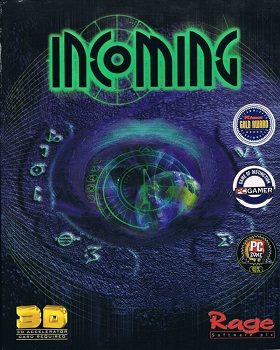
Incoming is a 3D shooter video game developed and published by Rage Software. The game was first released for Microsoft Windows in mid-1998, and was followed by a Dreamcast version, which was released in Japan on December 17, 1998, in Europe on October 14, 1999, and in North America on September 15, 1999. Set in the near-future of 2009, the game primarily revolves around controlling vehicles and turrets to fight alien invaders of Earth in one of the campaign modes, the arcade mode, and with or against another player. Some levels include brief real-time strategy segments.

Syndicate Wars is an isometric real-time tactical and strategic game, developed by Bullfrog Productions and published by Electronic Arts. It was released for DOS in 1996 and for the PlayStation in 1997. It is the second video game title in the Syndicate series, retaining the core gameplay and perspective of the original Syndicate, but with a setting 95 years further into the future.

Crusader: No Regret is an isometric action game developed by Origin Systems and published by Electronic Arts in 1996. Nominally a sequel to 1995's Crusader: No Remorse, it is considered both by critics and by the game director more akin to a stand-alone expansion pack. Mechanically similar to No Remorse, it features new levels, enemies and weapons.

MechWarrior 2: 31st Century Combat is a vehicle simulation game developed and published by Activision, released in 1995 as part of the MechWarrior series of video games in the BattleTech franchise. The game is set in 3057, and is played as a tactical simulation that incorporates aspects of real-time first-person combat and the physical simulation of the player's mech. It is a game recreation of the "Refusal War." The player can join one of the clans, Clan Jade Falcon or Clan Wolf while engaging in up to 32 missions.

Time Commando is an action-adventure computer and video game developed by Adeline Software and published by Electronic Arts in Europe, Activision in America, and Virgin Interactive Entertainment and Acclaim Entertainment in Japan.

NHL 98 is an ice hockey video game developed by EA Canada. It was released in 1997 and was the successor to NHL 97. It was the last installment of the NHL series to be released on the SNES, Sega Genesis, or Sega Saturn.

Final Liberation is a turn-based tactics video game released for Microsoft Windows in 1997, and re-released on GOG.com in 2015. The game is best known as the first video game based on Epic, a table-top wargame set in the fictional Warhammer 40,000 universe, in an attempt to recreate the table-top experience on a computer as opposed to using it as a backdrop for games in other genres. As a result, the game borrows heavily in terms of rules and style from the table-top game, demanding a combination of luck and tactics necessary to succeed in game warfare.
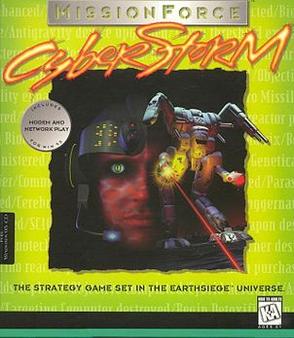
MissionForce: CyberStorm is a turn-based strategy game developed by Dynamix and published in 1996 by Sierra On-Line. The game is set in the Metaltech universe created by Dynamix, and the player control units of HERCULANs : bipedal warmachines of varying size and construct, more commonly known as HERCs. Although CyberStorm was a limited commercial success, it sold well enough to spawn a 1998 sequel called CyberStorm 2: Corporate Wars. It was digitally released by Activision on July 23, 2019 on GOG.com.

Star Wars: TIE Fighter is a 1994 Star Wars space flight simulator and space combat video game, a sequel in the Star Wars: X-Wing series. It places the player in the role of an Imperial starfighter pilot during events that occur between The Empire Strikes Back and Return of the Jedi.
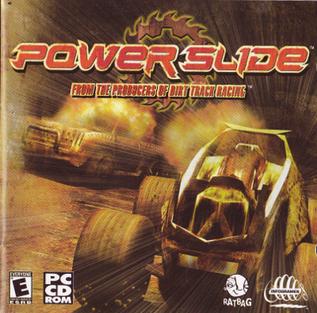
Powerslide is a post-apocalyptic Microsoft Windows racing game by Australian developer Ratbag Games. It was released in Australia, United States and Europe in 1998. Powerslide was praised for its graphics and AI in particular. A sequel, Powerslide: Slipstream, was in development as of 2004, but Ratbag couldn't find a suitable publisher, and shortly after the company was shut down. Powerslide was re-released on GOG.com in 2012.
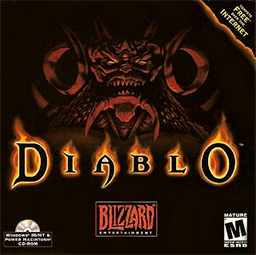
Diablo is an action role-playing video game developed by Blizzard North and released by Blizzard Entertainment in January 1997, and is the first installment in the video game series of the same name.

Sinistar: Unleashed is a 1999 action space shooter video game for Microsoft Windows. It was designed by Marc Michalik and Walter Wright and developed at GameFX, a small studio composed of former members of Looking Glass Studios. Originally titled Out of the Void, development of the project began in 1997 and had no relationship with the Sinistar franchise. After licensing the franchise from Midway Games that year, GameFX shifted the focus of the game and developed it as a sequel to the original Sinistar, which was released by Williams in 1982.

Uprising 2: Lead and Destroy is an action/real-time strategy video game developed by Cyclone Studios and published by 3DO on December 9, 1998 for Microsoft Windows. The game is a direct sequel to Uprising which was developed and published by the same companies. The game allows the player to again take control of the powerful Wraith command tank, and enter the fight with a ruthless horde of enemies called the Kri'iSara, who also appeared in the PlayStation port of the first game. Upon release, critics lauded the game for its graphical presentation and unique style of gameplay, but were displeased with its lack of difficulty and predictable mission structure.

M.A.X.: Mechanized Assault & Exploration is a 1996 hybrid real-time/turn-based strategy video game for PC developed and published by Interplay Productions. The goal is to colonize newly-discovered planets, controlling the resources found there, and defend the colony against other rival factions.

TigerShark is a 1997 video game published by GT Interactive for the PlayStation and Windows, and the first game to be released by its developer, n-Space.
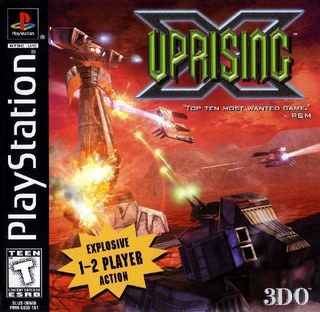
Uprising X is a port of Uprising: Join or Die for the original PlayStation, released December 15, 1998 in the U.S., with gameplay being similar to the original. The game was published and developed by Cyclone Studios, a division of 3DO. Upon release, it garnered praise for its variety of levels as well as its gameplay, but drew criticism for its graphical presentation.





















